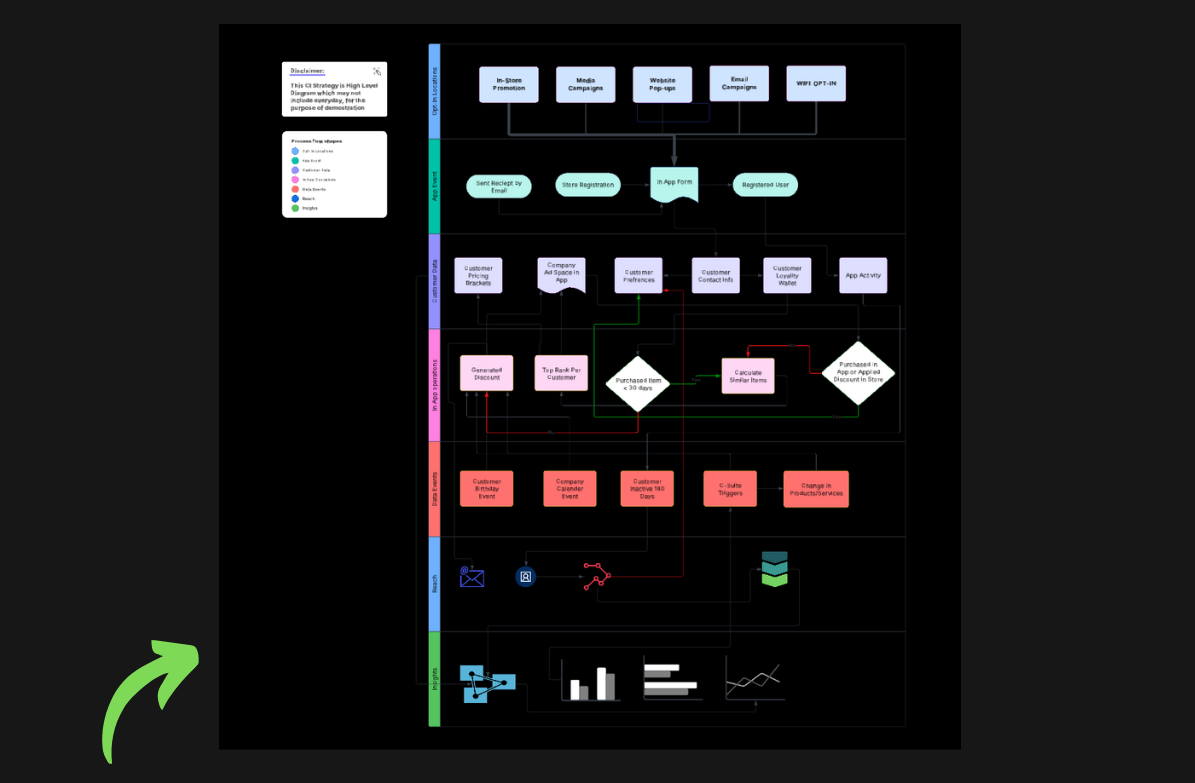Key Takeaways:
- Personalization is essential for creating engaging customer experiences that enhance loyalty.
- Excellent customer support can substantially impact repeat purchases and overall satisfaction.
- Leveraging customer feedback can lead to valuable insights, leading to improvements in products and services.
- Subscription models not only stabilize revenue streams but also encourage long-term customer relationships.
- Implementing analytics tools can provide clarity on customer behavior and improve marketing strategies.
Introduction
Overview of Customer Lifetime Value (CLV)
Customer Lifetime Value, often abbreviated as CLV or LTV, is a metric that estimates the total revenue a business can expect from a single customer account throughout their relationship with that brand. It’s not just a number; it’s a prediction based on historical data and future behavior. Businesses, especially in e-commerce, can’t ignore this statistic – it’s a crucial indicator of health and profitability.
Importance of CLV in E-Commerce
Understanding and improving CLV can transform an e-commerce business. It’s about fostering loyalty over one-off transactions. When companies focus on enhancing their CLV, they can optimize their marketing spending, improve customer service, and ultimately generate higher profits. It’s relaying a message: “We value your business, and we’re here for the long haul.”
How to Increase Customer Lifetime Value in E-Commerce?
Strategy 1: Implementing Personalization
Personalization is basically the name of the game today. When businesses tailor their offerings to individual preferences, they create meaningful connections. Think of those times you received an email recommending products based on your last purchase. It feels like, well, someone is actually listening. Implementing personalized recommendations can lead to higher conversion rates, as you’re showing consumers just what they didn’t know they needed.
Strategy 2: Enhancing Customer Support
Have you ever had a great experience with customer service? It’s memorable, right? Enhancing customer support can take your e-commerce brand from just okay to downright fantastic. Quick, helpful responses can build trust and encourage repeat purchases. Consider using live chat or comprehensive FAQs. It’s about making customers feel valued. How many times have you hesitated to buy something because of shy customer support? Exactly.
Strategy 3: Utilizing Customer Feedback
Customer feedback isn’t just about collecting data; it’s about listening and acting on it. Regularly seeking customer opinions can provide insights into what’s working and what’s not. An email survey after a purchase, perhaps? Or maybe a follow-up asking about their experience? Making adjustments based on actual customer feedback can enhance satisfaction and, ultimately, retention.
Strategy 4: Offering Subscription Models
Subscriptions aren’t just for magazines anymore. They’ve become a solid revenue model for many e-commerce brands. By offering subscription services, you not only ensure a steady stream of income but also foster customer loyalty. Imagine a monthly box of your favorite snacks arriving at your doorstep! Different types of subscription models fit various business styles, from “try before you buy” to discount bundles.
Strategy 5: Creating Loyalty Programs
Loyalty programs can effectively enhance the CLV. They reward repeat customers, encourage more purchases, and create a sense of community around a brand. Think of those points that accrue with every transaction—it’s like gamification. But, it’s important these programs feel valuable and accessible. Nobody likes feeling like they’re never close to winning those rewards.
What is the Future of E-Commerce in 2025?
Trends Shaping E-Commerce
Growth of Artificial Intelligence
AI is already making waves in e-commerce and it’s projected to continue. From chatbots assisting with customer inquiries to automated inventory management, AI can streamline operations and enhance the consumer experience.
Rise of Sustainable Practices
More consumers are making purchasing decisions based on a company’s sustainability practices. In 2025, brands that prioritize eco-friendly methods might see a boost in CLV, as more buyers feel connected to them through shared values.
Impact of Technology on E-Commerce
Augmented Reality
Imagine trying on clothes virtually or seeing how a piece of furniture looks in your home before buying. Augmented Reality (AR) can create immersive experiences, making it easier for consumers to commit to purchases.
Voice Commerce
The rise of voice assistants means e-commerce needs to be ready. Voice commerce is gaining traction, and optimizing for voice search can open up new avenues for customer interaction.
What is the 80/20 Rule in CLV?
Explanation of the 80/20 Rule
The 80/20 rule, or Pareto Principle, suggests that roughly 80% of outcomes come from 20% of causes. In the context of CLV, it can mean that 80% of your profits might come from just 20% of your customers. It’s a bit startling, isn’t it?
Application of the 80/20 Rule in E-Commerce
Applying this rule effectively requires identifying your most profitable customer segments and focusing marketing efforts towards them.
Identifying Key Customer Segments
Analyzing purchase patterns can help in segmenting customers to tailor your marketing strategies more effectively. Perhaps you discover a small group that represents a bulk of your revenue. Interesting.
What is CLV in E-Commerce?
Definition of Customer Lifetime Value
As mentioned earlier, CLV is a predictive metric that assesses the total revenue from a customer throughout the duration of their relationship with a brand.
Formula for Calculating CLV
Calculating CLV isn’t too complicated. It often involves taking average purchase value, multiplying it by purchase frequency, and then multiplying that by the average customer lifespan.
Importance of CLV in Business Strategy
Implementing a CLV-focused strategy can guide marketing decisions, budget allocations, and business expansion plans. It’s like a road map for sustainable growth.
How Can Personalization Impact CLV for E-Commerce Brands?
Tailoring Marketing Efforts
Customized marketing efforts resonate more with consumers. You’re likely to engage more when something feels created just for you, right?
Creating Customized Shopping Experiences
Tailoring the shopping experience based on past browsing or buying behavior can lead to profound engagement. It’s a way to resonate with customers on a personal level, and that can go a long way.
Case Studies of Successful Personalization
Just to provide a bit of evidence, renowned brands like Amazon and Netflix thrive on personalization. They analyze user behavior to refine and personalize their offerings consistently.
What Role Does Customer Feedback Play in Increasing CLV in E-Commerce?
Importance of Customer Feedback
Feedback reveals valuable insights, letting businesses understand customer perceptions and expectations. Gathering it shouldn’t feel like a chore for your customers, though.
How to Collect and Analyze Feedback
Surveys, social media polls, and direct emails can all work. It’s crucial to analyze this feedback carefully—what’s the sentiment? What common issues arise?
Implementing Changes Based on Customer Insights
Using feedback effectively means taking action. Responding to critiques or suggestions showcases that you care. Plus, it may lead to improved offerings, which could boost your CLV.
How Can Subscription Models Enhance Customer Lifetime Value?
Benefits of Subscription Services
There’s a reason subscription services have exploded recently. They offer convenience and predictability for both the business and customers, creating a solid foundation for loyalty.
Types of Subscription Models
Differentiating models can matter. Do you offer monthly deliveries, or are you leaning towards a tiered approach? Consider your customer base and what might appeal most.
Key Considerations for Implementing Subscription Options
Choosing the right options requires understanding your market. It may take some trial and error, but selecting the right subscription offering can be a game-changer.
What Analytics Tools Can Be Used to Measure CLV Effectively?
Overview of Analytics Tools
Using analytics tools can help clarify what strategies work best.
Google Analytics
Google Analytics can help track user behavior, providing insights into how customers interact with your site.
Customer Relationship Management (CRM) Systems
CRM systems, like Salesforce, can help manage interactions and analyze data throughout the customer lifecycle, capturing those detailed moments that matter.
Key Metrics to Monitor for CLV
Looking at metrics like repeat purchase rate and average order value can help determine where you need to focus efforts.
Integrating Analytics with Business Strategy
Ultimately, analytics should align with your overall strategy. Let the data guide decisions, from marketing to product development.
How Do Customer Retention Strategies Influence CLV in the E-Commerce Space?
Importance of Retention in Increasing CLV
While acquiring new customers is vital, retention often proves more cost-effective. A loyal customer generally translates to more sales, and that’s where CLV gets boosted.
Effective Retention Strategies
Focusing on retaining existing customers can be more productive than pursuing new ones.
Email Marketing Campaigns
Using email marketing effectively can nurture existing relationships, keeping your brand in their minds.
Retargeting Ads
You’ve seen those ads for products you were once interested in, right? Those retargeting ads can remind customers to return and complete their purchases.
Customer Engagement Techniques
Engaging customers through curated content or community-building efforts helps foster deeper relationships. It’s about more than just selling.
Conclusion
Recap of Strategies
To enhance CLV in e-commerce by 2025, brands should focus on personalization, customer support, feedback, subscriptions, and loyalty programs. These strategies aren’t just buzzwords; they’re pathways to creating more lasting relationships with customers.
Future Outlook on CLV in E-Commerce
Looking forward, as technology continues to evolve, the potential for enhancing CLV will likely grow. Brands that adapt and listen closely to their customers will not just survive but thrive.
In closing, if you’d like to explore topics on customer retention and other strategies, check out our articles on Customer Retention Systems for E-Commerce in 2025 and What is Customer Retention Management?. Also, if calculating retention’s impact intrigues you, don’t miss out on our Retention ROI Calculator.
Let’s keep the conversation about enhancing Customer Lifetime Value alive!



